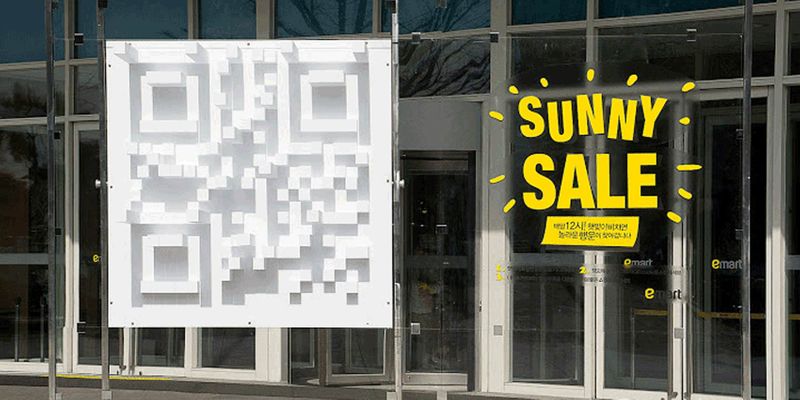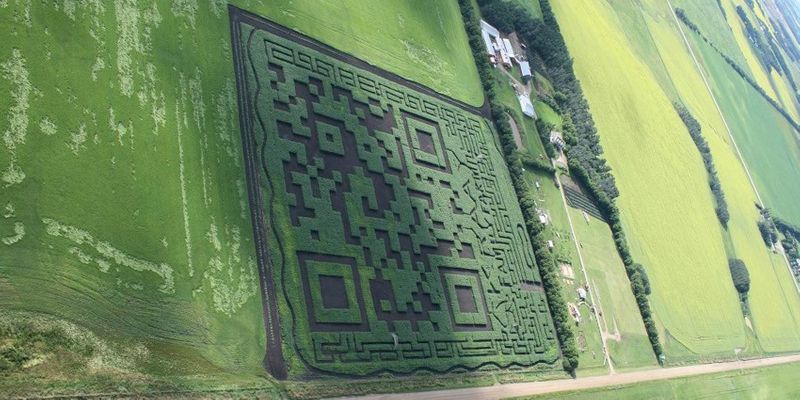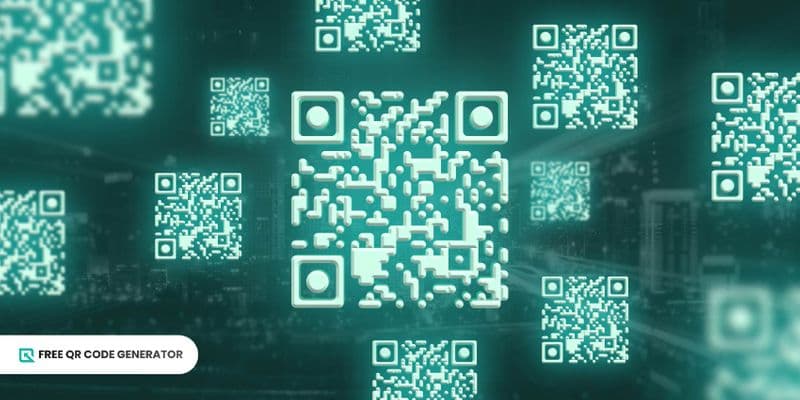The first step to making a 3D print QR code involves creating the code itself. You can achieve this by using a reliable QR code software.
3D printing opens up new frontiers for innovation, and QR codes are no exception. Unlike the traditional flat QR codes, 3D printed codes have depth, texture, and visual interest, making them stand out.
Discover how you can bring QR codes into the three-dimensional world as Free QR Code Generator details how to make and print one.
Table of Contents
- Must know: Can a QR code be 3D printed?
- Steps to create and print a QR code using Free QR Code Generator
- Reliable 3D modeling software you can use as a QR code STL generator
- Creative ways to use a 3D print QR code
- Innovative real-life 3D QR code designs and uses you need to know about
- Best practices for using a 3D print QR code
- Create functional QR codes for 3D printing via Free QR Code Generator
- Frequently asked questions
Must know: Can a QR code be 3D printed?
One question that frequently arises is whether you can print a QR code in 3D instead of just being two-dimensional.
The answer? Yes. You can customize QR code designs and print them into three-dimensional ones, allowing you to have tangible QR codes in your hands.
This transformation allows for new interactions and functionalities, expanding the QR code's utility beyond traditional applications.
Steps to create and print a QR code using Free QR Code Generator

Before going into the 3D printing process, you must first create a design for your custom QR code, and you need a reliable QR code maker and 3D modeling software tools to do that.
Follow this step-by-step guide to make and print one successfully:
Generating the QR code
1. Go to Free QR Code Generator and select a QR code solution of your choice. Sign up for a freemium trial and enjoy three dynamic QR codes.
2. Input the required information and generate the QR code. Make sure to run a scan test.
3. Download the image in SVG format.
3D printing the QR code
1. Create the 3D model through a 3D modeling software tool.
2. Export the QR code to STL or OBJ format.
3. Convert the model into a series of instructions that the 3D printer can follow.
4. Print your QR code in PLA or ABS plastics. For the printer, you can use one from top brands like Prusa, Creality, and Bambu.
Make sure to test the QR code again to see if it’s working.
Reliable 3D modeling software you can use as a QR code STL generator
There are numerous 3D modeling platforms online that you can use to create a three-dimensional model of your custom QR code.
To help narrow down your choices, we have curated this list of 3D modeling tools online that are free, reliable, and require no download:
Tinkercad
If you’re new to 3D modeling and printing, then we recommend Tinkercard—a free, web-based 3D modeling software developed by Autodesk that over 50 million users use for 3D designing, printing, and coding.
It is highly accessible for beginners, educators, hobbyists, and even kids who want to learn and explore the world of 3D design and modeling without the need for extensive technical knowledge or experience.
Since this is a web-based software application, you don’t need to download it on your device, allowing you to bring your 3D print QR code models to life anytime, anywhere.
SketchUp
Right in the browser—that’s how the 3D modeling software SketchUp works. Users can create, edit, and share 3D models right on the website without the need to download the software on their computers.
The software offers the following features:
- A push-pull tool that allows you to extrude 2D shapes into 3D objects quickly and intuitively
- Imports SKP, JPG, and PNG file types
- Exports SKP, PNG, and STL file types for 3d printing QR codes and other models
- 10 GB of Trimble Connect cloud storage that allows you to share your projects and collaborate with your team
- Mobile model viewing through the SketchUp Viewer app
You can use the SketchUp Free without the need to provide your credit card details.
Vectary
Vectary is another in-browser, no-code platform where you can create three-dimensional designs and turn them into Augmented Reality (AR).
It provides a user-friendly interface that works from your desktop or mobile phone and offers a range of tools and features for designing 3D objects.
You can import any of your designs from Autodesk, SketchUp, Blender, Figma, and many more for seamless workflows and sharing of content.
Vectary’s collaboration features that allow multiple users to work on the same project simultaneously also make it suitable for teams or groups working on 3D design projects.
Creative ways to use a 3D print QR code
The ability to print QR codes in 3D opens up numerous practical applications, from unique everyday tools to innovative QR code art and marketing strategies.
Here are some creative ideas you can try with these tangible QR codes to enhance interactivity and offer a new dimension of engagement to users:
QR code art installation

Embrace the creative potential of 3D-printed QR codes further by using them as installations or interactive artworks.
You can use a URL QR code for your 3D art, leading your audience to your website page that talks about the artwork, and your creative process as an artist, or reveals hidden content.
This convergence of art and technology opens new avenues for expression and collaboration in the digital age.
QR code keychain
Have a unique and functional keychain by using a 3D print QR code design.
You can use a vCard QR code to store your personal or business contact information and print it in 3D.
This is a great accessory to use for your Airbnb or hotel keys, allowing your guests to contact you as soon as possible in case they have requests or concerns about the accommodation.
With a three-dimensional design, this QR code keychain is more durable compared to its 2D counterpart and doubles as a decorative accessory or promotional item for your business.
It can also help you locate your keys in case you lost them as the finder can just scan the QR code and contact you immediately to return them.
QR code gift stamp
Do you want to gift someone a unique souvenir like those stamps from Japan that tourists collect? You can also create one by designing a 3D model with a twist: integrating a QR code into the design.
Store a special message on a text QR code and integrate it within the stamp design that reflects the recipient’s unique style and personality before printing it in 3D.
This stamp not only leaves a beautiful imprint but also contains a hidden digital message that the recipient can unlock.
Innovative real-life 3D QR code designs and uses you need to know about
Businesses and individuals are bringing QR codes into the three-dimensional world not just by simply integrating them into flat surfaces but by making the two-dimensional barcode into a 3D itself.
Take a look at how this forward-thinking business uses QR technology in the three-dimensional format as part of its QR code in marketing strategies:
Korean Emart shadow QR code

QR code marketing is now a common practice for businesses in various industries. However, the Korean retail chain, Korean Emart, takes it further.
By combining creativity, innovation, and science, the retailer installed shadow-activated QR code sculptures throughout Seoul for their Sunny Sale campaign.
The installation, which is composed of 3D blocks, turns into a QR code once the clock hits noon, which customers can scan to get discounts at the store, increasing foot traffic during this quiet shopping time.
Lego QR code
One of Germany’s largest online toy stores, MyToys.de, uses Lego bricks to create a 3d QR code to promote their LEGO products.
The colorful Lego QR codes were placed all around Germany for passersby to scan, directing them to the shop’s desktop website landing page where they can order the Lego boxes.
49% of the traffic on Mytoys.de's website was from the QR code campaign, allowing them to sell the Lego boxes advertised on the landing page twice as many compared to the ones not on the page.
QR code corn maze

The Kraay Family Farm makes the word massive an understatement by creating a 309,570 square feet QR code maze in the middle of their corn farm.
When you’re in the ground, you can explore the paths around the cornfield, but when you’re above, you can view and scan the QR code, leading you to the family’s website.
This fully functioning QR code maze was even recognized by the Guinness Book of World Records as the world's largest.
Best practices for using a 3D print QR code
A 3D-printed QR code can be tricky as you need to print them accurately so they remain readable and scannable.
We have prepared this 3D printing and QR code best practices that can guide you in successfully crafting one for your personal or business needs:
Design a functional QR code
First things first, make sure to create a readable QR code. You can use Free QR Code Generator to create functional yet aesthetically pleasing QR codes.
Use high-contrast colors and clear, well-defined patterns. Avoid intricate or overly complex designs that may interfere with scanning.
It is advisable to use dynamic QR codes as they have a more efficient data compression technique that reduces the complexity of the QR code pattern, making it easier for QR code scanners to decode the information it contains accurately.
Dynamic QR codes also have higher levels of error correction, helping improve the overall reliability and readability of the QR code.
Use trusty 3D modeling software
Modeling can also significantly impact the readability of 3D-printed QR codes.
Aside from the QR code software, you also need to use a reliable three-dimensional modeling software tool that you can use as a QR code stl generator for 3D printing.
This way, you can ensure that the printer can produce all the parts of the QR code accurately.
Maintain an appropriate size and scale
Pay attention to the size and scale of your 3D-printed QR codes to ensure that they are neither too small nor too large for scanning.
Codes that are too small may be difficult to scan, especially from a distance or in low-light conditions, while codes that are too large may dominate the design or detract from the overall aesthetic.
Aim for a size that strikes a balance between visibility and practicality, considering the intended placement and scanning distance.
Choose high-quality materials
Choose materials for your 3D print QR code that are durable and compatible with your intended use case.
Consider factors such as environmental conditions, handling requirements, and longevity when selecting materials.
PLA and ABS plastics are commonly used for 3D printing QR codes due to their durability and versatility.
Always test your 3D-printed QR code
Thoroughly test the scannability of your 3D-printed QR code in different scanning distances, angles, and lighting conditions to ensure that it can be reliably scanned in real-world scenarios.
Consider periodically retesting the scannability of the QR code to identify any potential issues.
Create functional QR codes for 3D printing via Free QR Code Generator
By transforming a traditionally flat QR code into a tangible object, individuals and businesses alike can unlock new forms of marketing strategies.
These unique QR codes add depth and dimension to the scanning experience, captivating audiences and enhancing the overall impact of QR code-based campaigns and projects.
Want to produce a high-quality 3D print QR code design? Visit our website now and use our advanced QR code solutions and customization tools to create QR codes for 3D printing with ease.
Frequently asked questions
Will a QR code work if I print it?
Absolutely. In fact, you can mostly find QR codes printed on physical materials such as posters, product packaging, signage, and more.
Just make sure that you design a readable QR code and print it using high-quality materials to maintain its scannability.
What is the best format to print a QR code?
A higher resolution helps prevent distortion or blurriness, especially when printing QR codes in smaller sizes.
Use vector graphics formats such as SVG (Scalable Vector Graphics) for printing QR codes, as you can scale it to any size without loss of quality.
You can also consider using the raster image format PNG (Portable Network Graphics). This provides sufficient resolution and clarity for most printing applications, especially when printed at larger sizes.

